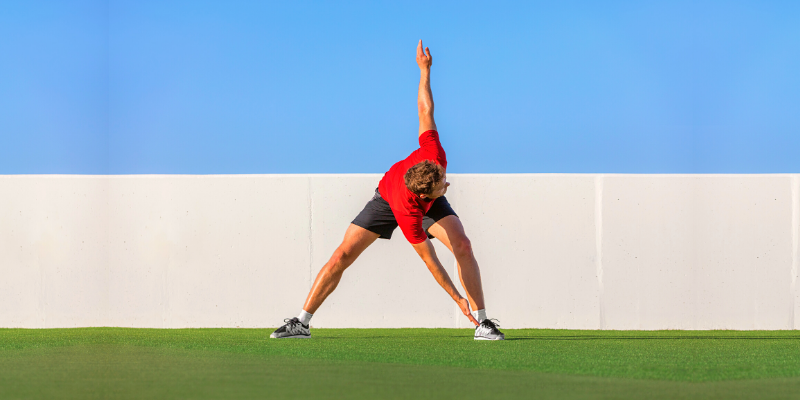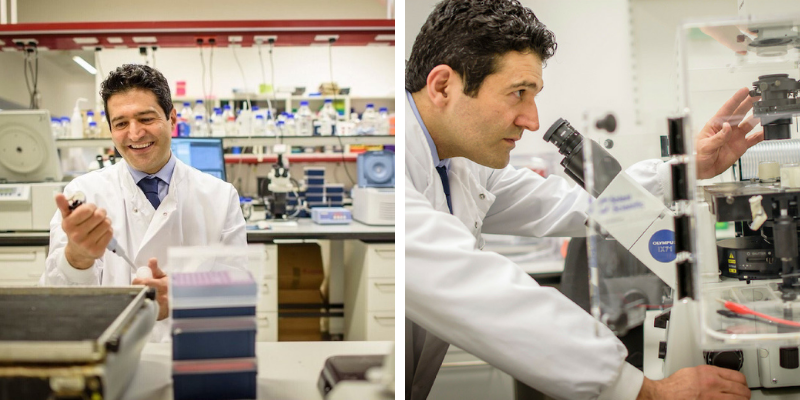Does stretching take a back seat to the rest of your workout routine? If yes, don’t worry you are not alone! Physiotherapist and NuroKor Norway Distributor, Hilde Hjertholm says many casual exercise and sport partakers find it difficult to break bad habits of skipping stretching and flexibility work. Hilde shares with us, the importance of breaking these habits, the benefits stretching can have and some easy ways you can bring stretching into your daily routine - in and outside of exercise.
“As an athlete, no matter what level, you need to properly take care of your muscles and body, or you’re putting yourself at risk of injury,” says Hilde. “If you can take 10-15 minutes at least a few times a week to stretch, you’ll reap more benefits than you might expect, and this will allow your body to get stronger, healthier and fitter than you would be otherwise.”

STRETCHING. WHAT IS IT GOOD FOR?
As well as helping with injury prevention, stretching can also help keep the muscles flexible, strong, and healthy. Flexibility is vital to maintain a range of motion in the joints, and without it, the muscles shorten and become tight.
“Most people know that stretching increases blood supply, but what they may not realise, is that it also increases nutrient supply to the muscles. Blood carries nutrients, so when you stretch, you’re allowing blood to flow through your body, and the nutrients in the blood to spread throughout the body. An increased blood and nutrient supply can help with reducing muscle soreness.”
DEDICATE TIME TO STRETCH
One of the best times to stretch is when the muscles are warm after exercising. But there is some evidence to suggest that regular static stretching outside of regular periods of exercise, may increase power and speed, and reduce injury.
“Professional athletes have been focused on stretching techniques for years, because they know it can dramatically improve their athletic performance and help them avoid injury. Warming up can do more than just loosen stiff muscles; when done properly, it can actually dramatically improve performance.” Hilde goes on to say, “As a general rule of thumb, stretch whenever you exercise. Before being active, dedicate 5 minutes to stretch all of the body's major muscle groups. This will help you warm up and reduce the risk of injuring cold, stiff muscles. During the cool-down after you've finished, use light stretching to help prevent post-exercise soreness and keep the muscles ready for the next day.”

GET SOME BIOELECTRONIC ASSISTANCE
Hilde is a strong believer in using bioelectronics to assist in activating the muscles, outside of pain relief she suggests that devices such as NuroKor can be used to complement and aid your stretching routine.
“I would absolutely recommend using bioelectronics regularly to increase blood circulation and to help maintain a healthy body system. Using bioelectronics alongside stretching can help muscle soreness significantly and speed up muscle recovery.”

DON’T LET THE 9 to 5 STOP YOU
Stretching is particularly relevant for those of us who spend hours a day at a desk or sitting down. As Hilde explains: “In general, most people sit a lot during the day, and low levels of flexibility can cause them pain. The two most important muscles I would really recommend doing some daily stretches for is your chest and hip flexors. These muscles are very important to our posture, and a bad posture might cause you more problems over time in both back and knees."
"Neck muscles are also important to stretch mildly on a daily basis, to get rid of stress in that area.”

WORK IT INTO YOUR MORNING ROUTINE
Even if sometimes it doesn’t feel easy, it shouldn’t be too complicated to work stretching into a daily routine. Hilde suggests how it can be done: “Spend five minutes or so in the morning doing a few light stretches. Then stretch throughout the day to relieve tension or if you've been sitting or standing in one position for long periods. If you have a problem area, such as tightness in the back of your leg, you may want to stretch those areas every day or even twice a day.”
A number of our NuroKor athletes and customers use their NuroKor mibody device to help complement their workout routine and for stretching. Check out our videos for tips to incorporate the mibody device into your home workout routines.
To keep up to date with NuroKor athlete news and other stories follow @NuroKor on FB, Instagram & Twitter.





